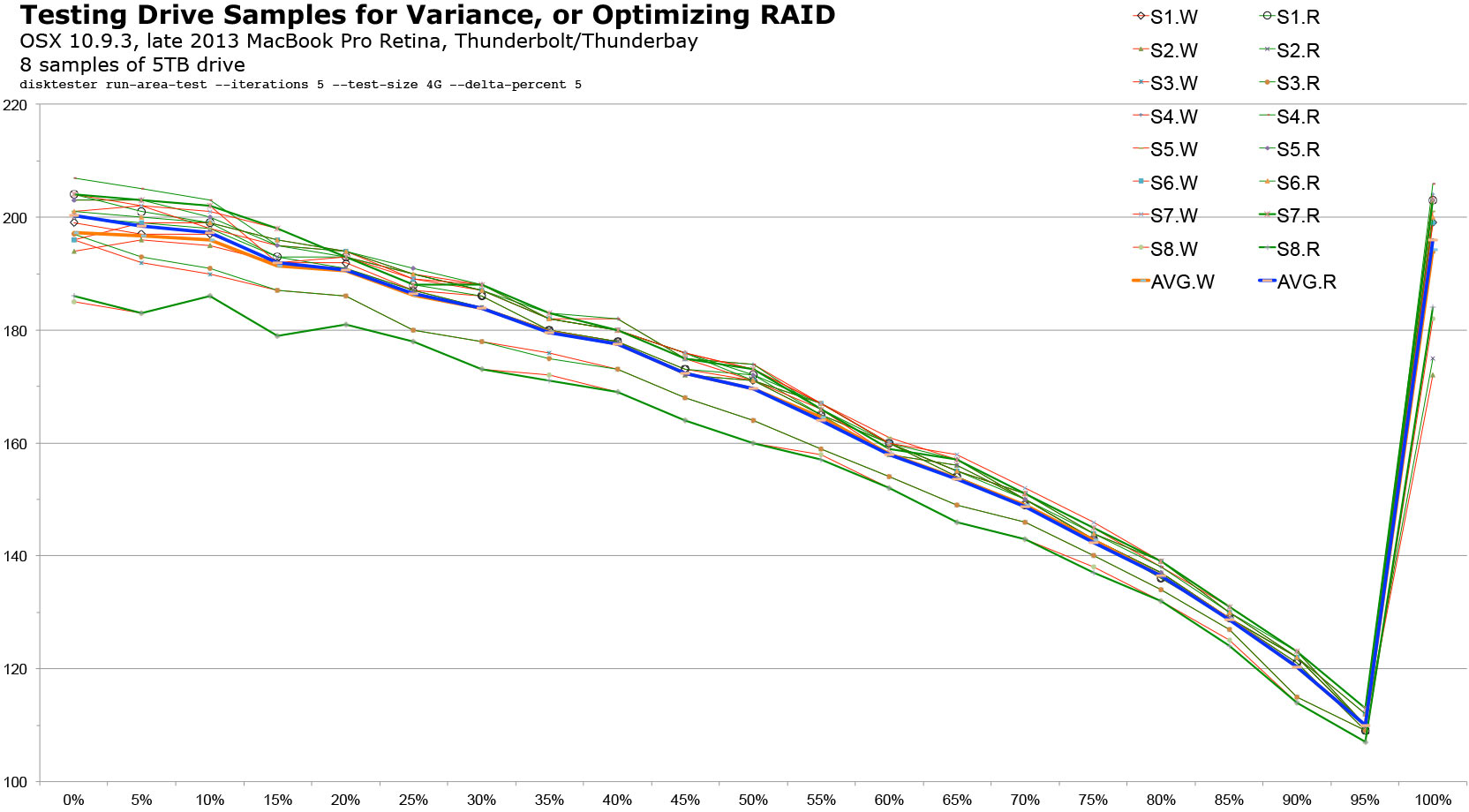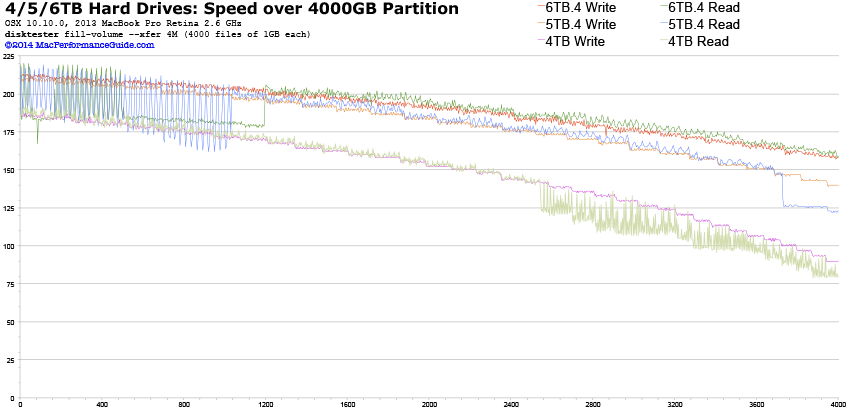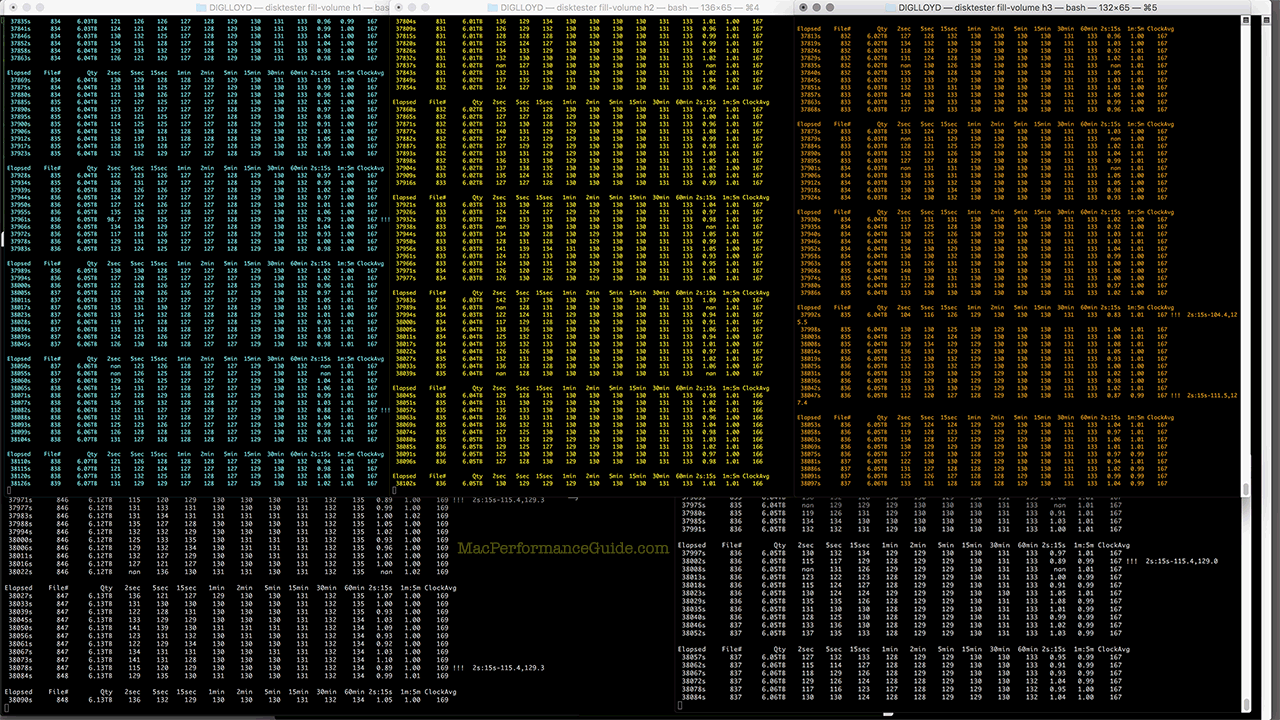Testing Hard Drive Consistency for a RAID
Among its many features, diglloydTools DiskTester offers a run-area-test command that can be used for relatively fast characterization of drive performance across its capacity. The results can be graphed to get a good idea of the drive performance.
For example, suppose a high performance RAID is envisioned: one laggard can cut the performance, since the slowest drive determines the peak speed.
As shown below, 8 samples were tested, and one of those eight is a significant laggard; this slower drive is best set aside as a cold spare or backup drive.
While DiskTester can test any number of drives simultaneously (via command line), testing should take care not to saturate the bandwidth; for example four fast hard drives can demand almost all of the Thunderbolt v1 bandwidth, and other devices on the bus could suck up bandwidth, disturbing the results.
Click for larger graph.

disktester run-area-test --iterations 5 --test-size 4G --delta-percent 5
DiskTester fill-volume — more detailed evaluation
For production RAID, MPG strongly recommends testing each drive individually with DiskTester fill-volume, to weed out any laggards and/or any drives with performance oddities. The fill-volume test takes a long time, since it has to write and read the entire drive. That’s 16TB for an 8TB drive, so at an average hard drive speed across the capacity of ~150 MB/sec, the test cycle will take about 29 hours.
The DiskTester fill-volume writes 1000 files that fill the capacity of the drive, and then reads them back, generating output data that can be pasted into the supplied spreadsheet for a graph that shows performance in detail across the entire capacity. Any glitches such as ranges of bad blocks, drive behaviors such as pauses for recalibration, etc. Another good use is for comparing drives; see 4/5/6TB Hard Drives: Higher Capacity Boosts Real-World Performance. As an added benefit, actually writing the entire drive can flush out problem drives that have a range of bad blocks (most hard drives ship with untested media!).

It is possibly to test any number of drives simultaneously with DiskTester, one per Terminal window, but beware of bus bandwidth limitations, particularly with SSDs, or too many drives will compete and all will be slowed by the others. For example, Thunderbolt 2 maxes-out at about 1350 MB/sec and all Macs except the Mac Pro have only a single Thunderbolt bus.
Shown below is DiskTester fill-volume being run in five Terminal windows on five HGST Ultrastar He8 hard drives. The HGST He8 enterprise-grade hard drive is unusually consistent sample-to-sample as can be seen by the "File #" and “ClockAvg” (MB/sec) column for each. The fill-volume test takes about 14 hours to write the data, and 14 hours to read it back, so it is a long running test.

disktester fill-volume
Some of the capabilities in diglloydTools
Aside from testing hard drive or SSD or RAID performance and reliability with DiskTester, data integrity with IntegrityChecker is a must-have workflow tool for anyone with important data:
- Detecting Corruption / Validating Data Integrity Over Time and Across Drives and Backup/Restore
- What an Impaired SSD Looks Like
- How to Safely Transfer Data or Verify Backups
- Example of Verifying Data Integrity.
- Are Your Backup Drives Still Functional? Are Your Files Subtly Damaged?
- How to Automate DiskUtility Verification of Mounted Volumes.
- Selling that Computer? Wipe Out Personal Files First
- Search for diglloydTools articles.

 diglloydTools™
diglloydTools™












